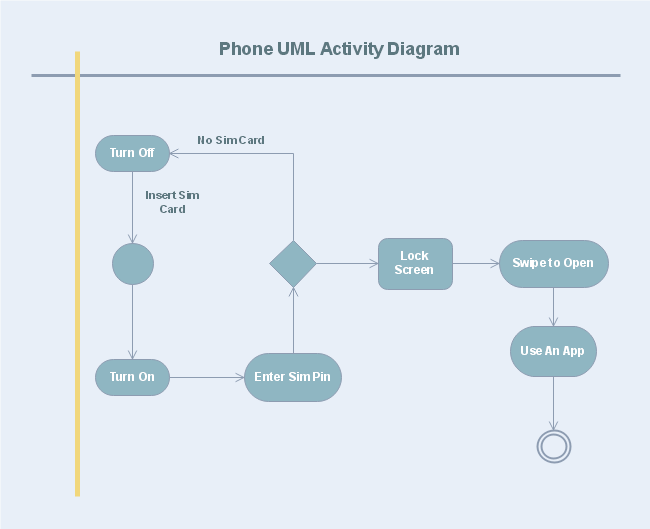

The UML Partners' UML 1.0 draft was proposed to the OMG in January 1997 by the consortium. The partnership also contained additional interested parties (for example HP, DEC, IBM and Microsoft).

Under the technical leadership of those three (Rumbaugh, Jacobson and Booch), a consortium called the UML Partners was organized in 1996 to complete the Unified Modeling Language (UML) specification, and propose it to the Object Management Group (OMG) for standardization.
#ACTIVITY DIAGRAM DEFINITION IN UML SOFTWARE#
They were soon assisted in their efforts by Ivar Jacobson, the creator of the object-oriented software engineering (OOSE) method, who joined them at Rational in 1995. Rational Software Corporation hired James Rumbaugh from General Electric in 1994 and after that the company became the source for two of the most popular object-oriented modeling approaches of the day: Rumbaugh's object-modeling technique (OMT) and Grady Booch's method. It is originally based on the notations of the Booch method, the object-modeling technique (OMT) and object-oriented software engineering (OOSE), which it has integrated into a single language. The timeline (see image) shows the highlights of the history of object-oriented modeling methods and notation. UML has been evolving since the second half of the 1990s and has its roots in the object-oriented programming methods developed in the late 1980s and early 1990s. : 536 History History of object-oriented methods and notation Before UML 1.0 In software engineering, most practitioners do not use UML, but instead produce informal hand drawn diagrams these diagrams, however, often include elements from UML. Since then the standard has been periodically revised to cover the latest revision of UML.

In 2005, UML was also published by the International Organization for Standardization (ISO) and the International Electrotechnical Commission (IEC) as the ISO/IEC 19501 standard. In 1997, UML was adopted as a standard by the Object Management Group (OMG), and has been managed by this organization ever since. It was developed at Rational Software in 1994–1995, with further development led by them through 1996. The creation of UML was originally motivated by the desire to standardize the disparate notational systems and approaches to software design. UML provides a standard notation for many types of diagrams which can be roughly divided into 3 main groups: behavior diagrams, interaction diagrams, and structure diagrams. The unified modeling language ( UML) is a general-purpose visual modeling language that is intended to provide a standard way to visualize the design of a system. For other uses, see UML (disambiguation).


 0 kommentar(er)
0 kommentar(er)
